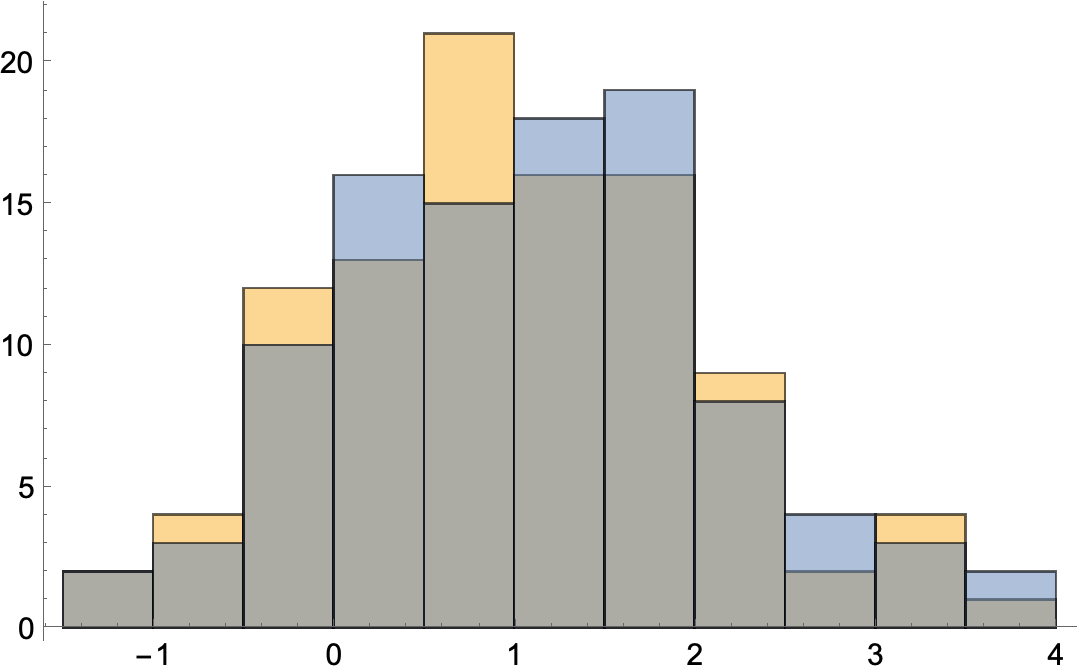There is not enough information provided to establish the exact meaning of the word "trend." For example, two normal random variates were generated and seem to overlap as below.
 Not knowing any better we do a two tailed t-test to see how they differ and get $p=0.495,$ not significant. Next, we examine if there is any trend or structure for the difference between them by using a pair-wise t-test and get $p=0$.
Not knowing any better we do a two tailed t-test to see how they differ and get $p=0.495,$ not significant. Next, we examine if there is any trend or structure for the difference between them by using a pair-wise t-test and get $p=0$.
This is because we didn't ask how the data were generated. Sample A consisted of 100 realizations of a random standard normal distribution. In this case, the pair-wise correlation between Sample A and Sample B is 1, and for each pair Sample B = Sample A + 0.1. That is, if the samples are not independent, and are correlated, we have to account for that in choosing our statistical testing.
Thus, I would ask what "trend" means by asking "What do you mean by trend?" In general, a "trend" can be very predictive, or not at all predictive depending on the circumstances. Moreover, we need to know what "two different conditions in an experiment" means. For example, these may or may not be random variates. They might for example be two different fit functions for a time series of blood plasma concentrations and we might be comparing two different methods of analyzing a single dataset. A very common mistake would be to look at the correlation between each model and the data, then compare the correlation coefficients as if they were uncorrelated. Comparison of correlated results yields a tendency, but without doing an analysis of correlated correlation coefficinets, which many people have never heard of, we would not be able to test properly for its significance.
In summary, there is not enough information provided about the experiment to render an opinion.
